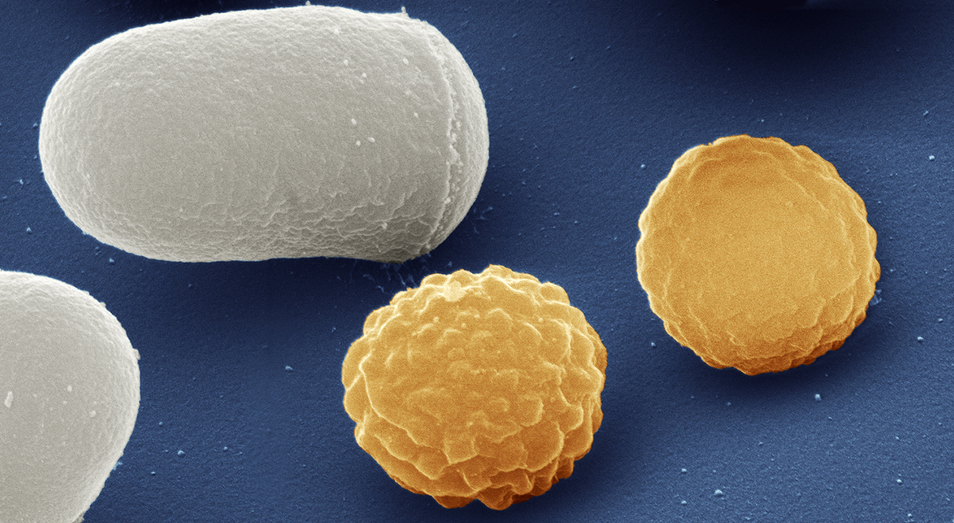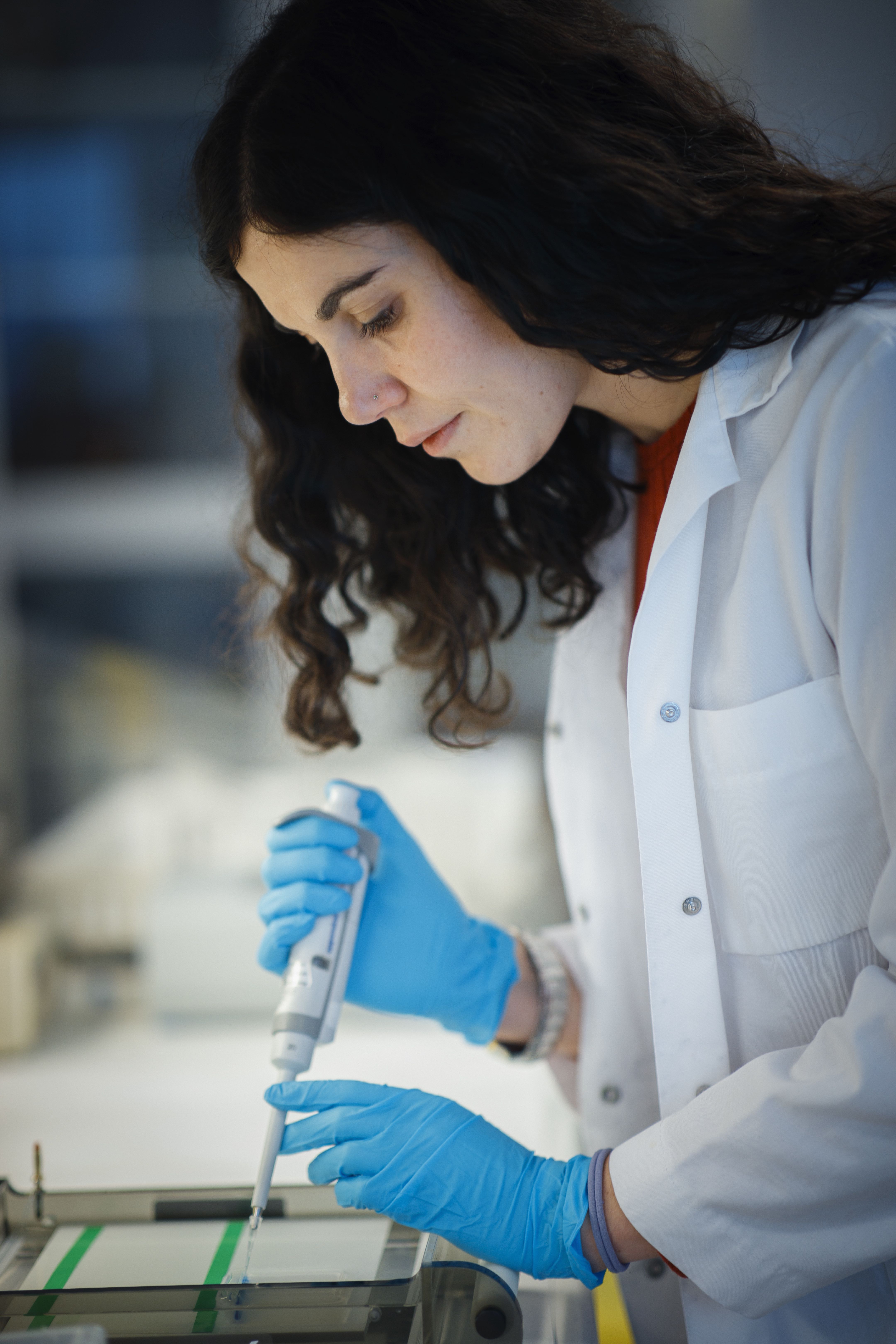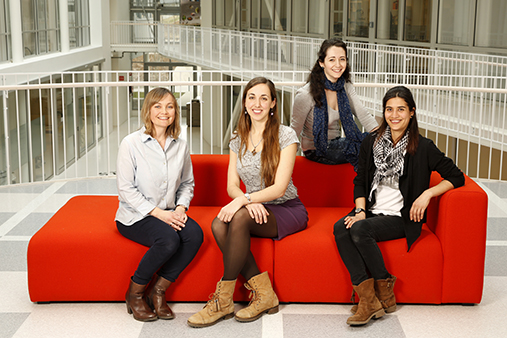Meet Associate Professor Sandra Lopez-Aviles, NCMM, University of Oslo
Dr Sandra Lopez-Aviles joined NCMM in 2011. Her research focusses on understanding the mechanisms controlling cell cycle progression. In this profile article, Dr Lopez-Aviles discusses her group's current focus on the role of protein phosphatases in cell cycle regulation, as well as the potential translational impact of this work.




What is your field of research and what are the main aims of your lab?
My group studies cell cycle control with a focus on the role of protein phosphatases in this process, particularly during nutritional sensing. We use fission yeast (Schizosaccharomyces pombe) as a model organism to study cell cycle regulation.
Tell us a little bit about what you were doing before you joined NCMM?
Before joining NCMM I was a post-doctoral researcher at the London Research Institute, Cancer Research UK (currently part of the Francis Crick Institute), in the lab of Dr. Frank Uhlmann.
What project(s) are you working on at the moment, and what do you hope to discover?
Much of our work focusses on the phosphatase PP2A, an enzyme that is frequently deregulated in breast cancer. Like all phosphatases, PP2A dephosphorylates its substrate proteins, and in doing so contributes to a range of cell signalling pathways and cell functions.
One of our current projects involves investigating the role of the PP2A-B55 complex in cell cycle regulation under optimal growth conditions (when cell proliferation is promoted). More specifically, we are investigating how PP2A-B55 regulates a histone deacetylase (HDAC) complex that plays an essential role in the repression of cell cycle arrest that occurs under favourable growth conditions. This HDAC complex is conserved through evolution and in mammalian cells it has been shown to have a role in breast cancer metastasis.
In another project, we are investigating the dephosphorylation of the only cyclin dependent kinase (CDK) inhibitor in fission yeast, Rum1 (similar to p21 or p27 in mammalian cells), by a second PP2A complex called PP2A-B56. This dephosphorylation is important to stabilize Rum1 and arrest cell cycle progression in response to differentiation signals. Similarly, in mammalian cells, p21 and p27 are essential during cell cycle arrest and differentiation.
We are also finalising a project that investigates how cells that have been forced to arrest their cell cycle for long periods of time can subsequently escape this arrest. It has been shown that the longer a cell is arrested in mitosis, the higher the chances that this cell undergoes programmed cell death (which is important in cancer treatment).
How physiologically relevant are yeast when it comes to studying the cell cycle in humans, and what advantages are there to using yeast compared to higher organisms?
Yeast cell division occurs via the same basic mechanisms as seen in human cells, but yeast cells are much simpler (they are haploid and there is less redundancy compared to metazoans). This principle was recognised as far back as the 19th century when the cell theory was postulated:
“We have seen that all organisms are composed of essentially like parts, namely cells; that these cells are formed and grow in accordance with essentially the same laws, hence that these processes must everywhere result from the operation of the same forces.”
Theodor Schwann, physiologist behind cell theory.
Therefore, work with yeast is useful to understand the core mechanisms controlling cell division.
Yeast cells are very easy to manipulate genetically and yeast is a great model to look at genetic interactions (i.e. whether two genes function in the same or in different pathways).
Researchers have access to collections containing deletions of every single gene in the yeast genome. This collection can be crossed in order to generate double mutants. This allows us to gain a global picture of which combinations of mutants are lethal for the yeast cell. In the case of budding yeast, around 1000 of its 4000 genes are essential (i.e. mutation leads to cell death), but there are 200,000 'synthetic lethal' interactions (combination of mutations lead to cell death). This gives researchers important information regarding which gene products we might target in combination to kill, for instance, a cancer cell.
What is the potential translational impact of your research? Which diseases could potentially be better treated by a more comprehensive understanding of the cell cycle?
Cell cycle research in yeast has potential applications for any disease where the control over cell cycle progression has been lost - in particular cancer. For instance, we have seen that when PP2A-B56 is not present, cells fail to downregulate CDK activity and do not arrest in response to nutritional deprivation. In consequence, these cells cannot differentiate or enter cell cycle arrest. This is something characteristic of tumor cells; their inability to withdraw from the cell cycle in response to anti-cell division signalling, and we think that loss of PP2A-B56 might contribute to this.
Protein phosphatases are generally considered to act as tumour suppressors. Is this always the case? What insights do we have that these enzymes might be an effective target for cancer therapy?
Yes, phosphatases are generally considered tumour suppressors, and very often their expression is lost in cancer. Consequently, researchers have previously considered phosphatases to be more difficult to target for cancer therapy, as activating an inactivated or deleted tumour suppressor is more challenging than inactivating an oncogene.
However, we now have a better understanding of how specific phosphatase subcomplexes (containing specific regulatory subunits) are regulated and what substrates they target. This allows for more controlled and precise targeting of their activity.
For instance, in the case of PP2A-B55, this phosphatase is inhibited by the kinase Greatwall (Mastl in mammalian cells), which is overexpressed in a subset of breast tumours with poor prognosis. Therefore, although targeting the phosphatase itself might be more challenging, we can still try to target its regulator.
Having said that, there are also investigations towards finding direct activators of PP2A that would enhance its activity.
What have been the biggest breakthroughs in your field of research in the past 10 years, in your opinion?
Probably the discovery of the Greatwall-ENSA-PP2A-B55 pathway that controls cell cycle progression, and the discovery of specific determinants that dictate which substrates are recognised by which phosphatases.
Traditionally, protein phosphatases have been regarded as poorly specific due to their low number in the cell compared to kinases, but thanks to these discoveries this paradigm is now shifting.
Where do you think your field of research will be in ten years?
We still have a lot to learn regarding the implications of regulated phosphatase activity and the specific substrates they target. I expect that in the coming years this knowledge will have increased exponentially.
What has been the greatest moment in your career so far?
I guess it was when the first paper from my lab was accepted. It had been a tough review process and we all had a great feeling of accomplishment. There have been other good moments in my career, but I thought that was the most meaningful for all the things that it involved.